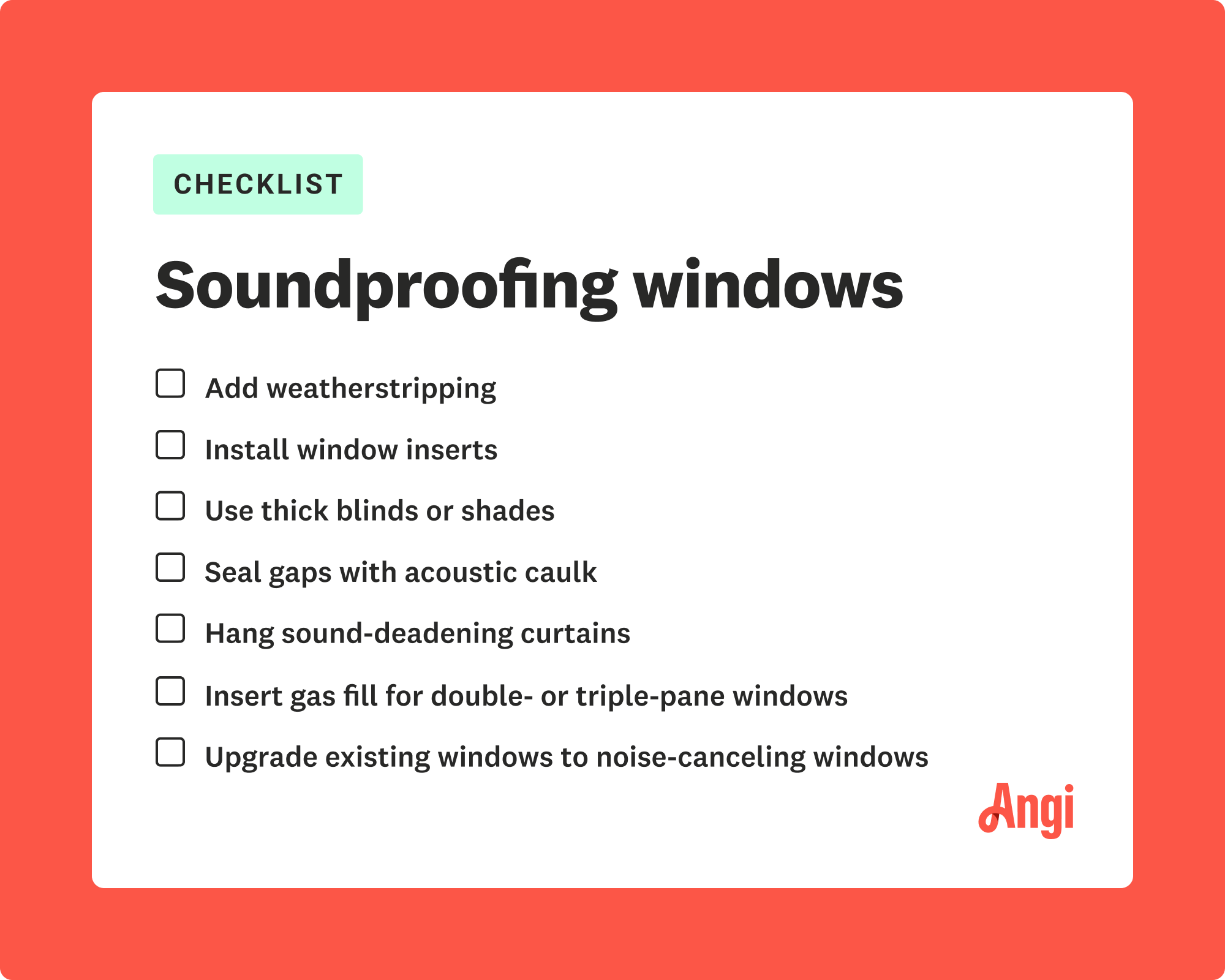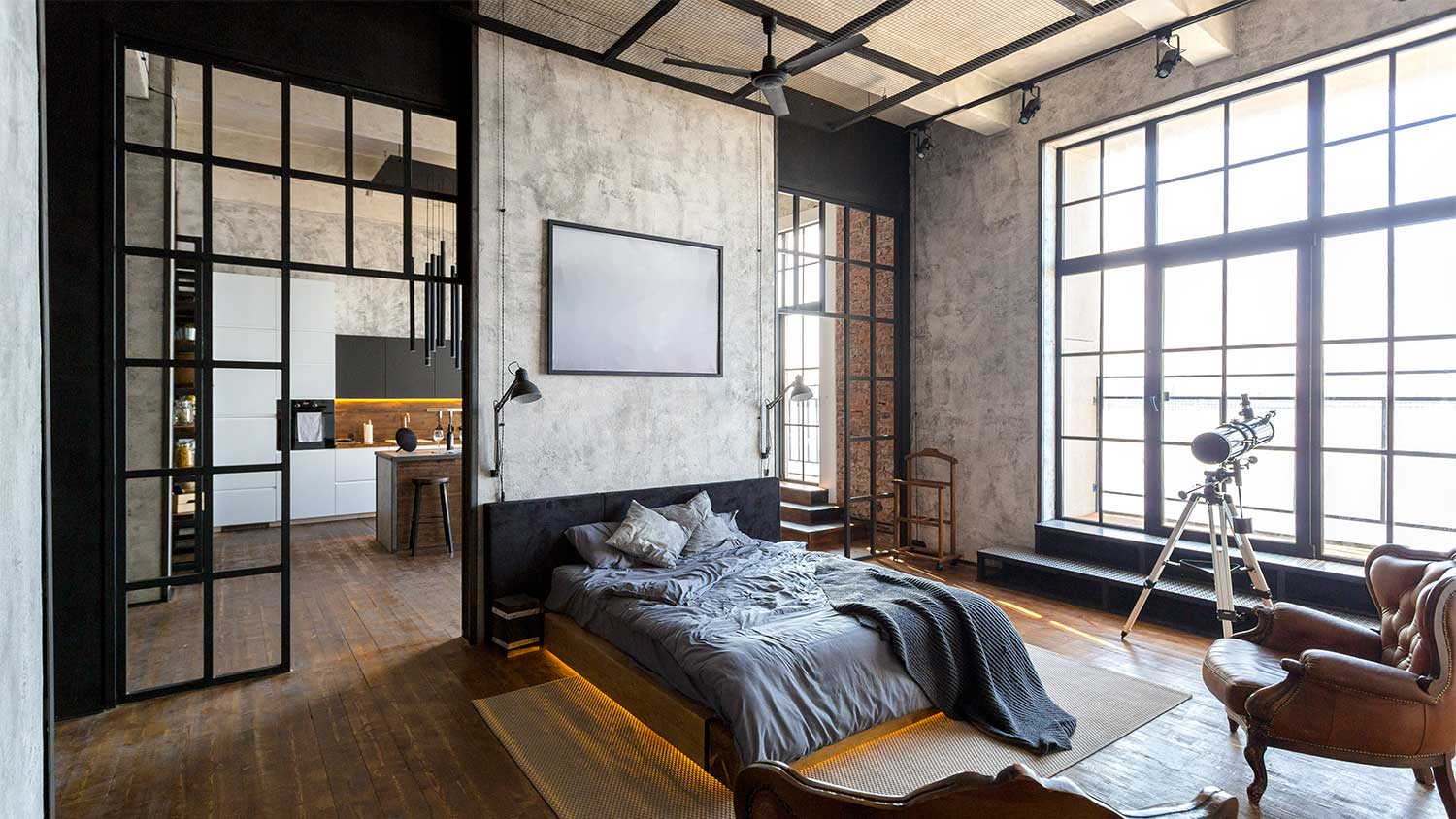
Considering window repair in San Francisco? Get 2025 data on average costs, typical ranges, and factors like San Francisco's microclimates, historic homes, and window size. Discover why repair often costs less than replacement.
Enjoy the sweet sound of quiet


Noise-canceling (or soundproofing) windows can block up to 95% of sounds
They add mass or space to a window to stop soundwaves from traveling through
Noise-canceling windows can cost 14% to 80% more than traditional windows
The most effective noise-canceling windows have an STC rating of 45 or higher

Noise pollution can come from anywhere—a busy road or your neighbor’s new dog that won’t stop yapping. You may not be able to control annoying or disruptive noises outside of your house, but you can control the racket inside it with noise-canceling windows.
These savior-like windows won’t completely cancel all noise, but they will significantly reduce it. High-quality residential soundproofing windows can block 95% of street noise. In other words, that early morning train doesn’t have to be your daily alarm clock. Here’s what you need to know about windows for noise reduction.
Noise-canceling windows, also known as soundproofing windows or noise-reduction windows, are exactly what they sound like: quiet. They help reduce (or almost eliminate) outside noise by using layers of glass and air. While there is no such thing as windows that provide 100% soundproofing, noise-canceling windows can reduce up to 95% of sounds.
In the United States, noise soundproofing windows are rated by their sound transmission class (STC). This measures how well they block out noise. The higher the number, the more sound the window can block. Your average single-pane window (which isn’t soundproof) usually has an STC rating between 25 and 27, but a high-end noise-canceling window may have an STC rating higher than 50.
To understand soundproofing, we must get technical for a moment. When sound waves travel through air and materials, some waves bounce off the surface of your window, some get absorbed, and some pass through. Soundproofing blocks noise by making the journey inside your home longer and more difficult, as well as reducing the resonance (echo) of the parts of your window that absorb waves. The typical strategies include:
Thickening glass to add mass
Installing extra panes to add mass
Installing a layer of plastic between the glass (known as laminated glass)
Adding space via gaps between the glass
Think of your window as a filter that sound has to travel through before reaching your ears—the more stuff that’s in the way, the less sound will get through.
It usually costs $300 to $1,500 on average to soundproof their existing windows. Sometimes, you’ll need to replace the entire window. Other times, you can just replace the window glass to quiet things down. The average window replacement costs $650 per window.
There are a few different types of noise-canceling windows to choose from, depending on your existing windows, your budget, and the amount of noise you need to block.
Double-pane (or double-glazed) windows have two panes of glass separated by a layer of air. While technically not soundproof, they will help block noise a lot better than your average single-pane window. They become soundproof by combining strategies like thicker glass, dissimilar glass, or laminated glass (more on this below).
Triple-pane (or triple-glazed) windows are like double-pane windows with one additional pane of glass that makes it harder for sound to navigate. A triple-pane replacement window costs 14% to 40% more than a double-pane window but usually has a higher STC rating.
Laminated glass—the kind used to soundproof music studios—is a layer of plastic sandwiched between two layers of glass, which can reduce noise levels by 75%. You can use this type of glass in double or triple windows, but it adds 15% to 80% to the cost of the window.
If you install a double- or triple-pane window with varying levels of glass thickness, you’ll have what’s known as a dissimilar glass window. Different thicknesses block different frequencies and work almost as well as laminated glass for a fraction of the cost.

Soundproof windows should have an STC rating of at least 45. At this level, you usually can’t hear bass tones or loud conversations. When choosing a noise-canceling window, it’s important to consider the type of noise you want to block:
Lower frequency noises (like pumping bass from a nightclub or an airplane flying overhead) are the hardest to block. You’ll need a window with a higher STC rating.
Higher frequency noises (like chirping birds and car alarms) are easier to block with an STC rating of 45.
A rating of 65 is considered complete soundproofing but isn’t usually necessary in a residential setting. Windows in the mid-50s may still block up to 95% of sound. You should consult a soundproofing contractor near you to help you find the best noise-reduction windows to suit your needs.
Whether you choose to install noise-reduction windows and you want more soundproofing or you’re looking to save money by skipping window replacements in favor of less expensive methods, there are many ways to soundproof windows.
If you do decide to install double- or triple-pane windows, you can make your windows more energy-efficient with gas fill. This process involves filling the space between the glass panes with argon or krypton, both of which help slow heat transmission and sound waves. This provides some soundproofing as well as better insulation for your home.
Window inserts act like an added pane of glass. They are usually made with laminated glass, which features a plastic layer between two sheets of glass. A window contractor will install the insert within the window frame but outside of the interior window pane. This setup slows down the sound waves since they have to travel through the insert as well as the space between the insert and the glass.
Standard window inserts can block noise by about 50%. For improved soundproofing, opt for acoustic-grade window inserts. This style of insert can block noise by about 70%.
Weatherstripping can improve noise reduction in windows by creating a tighter seal. DIYers commonly use weatherstripping for better insulation against cold drafts in the winter or hot air leaks in the summer, but weatherstripping can seal out some noise from the neighborhood, too. As an added bonus, it’s easy to DIY, and weatherstripping costs about $100 per window.
You can use acoustic caulk for interior windows instead of standard window caulk for noise reduction benefits. This caulk goes in gaps or cracks around a window frame to dampen sounds. Because you need to caulk both the inside and outside of windows, make sure you use acoustic caulk indoors and use a caulk designed for exterior use outdoors.
Sound-deadening curtains and thick blinds or window shades can provide moderate benefits if you want to block echoes inside the room, although these options aren’t as effective as preventing outside noises from coming into your room. They can help minimize quieter outdoor sounds, like noisy bugs or ribbiting frogs, but they won’t shut out your next-door neighbor's lawn mower at 7 a.m.
From average costs to expert advice, get all the answers you need to get your job done.

Considering window repair in San Francisco? Get 2025 data on average costs, typical ranges, and factors like San Francisco's microclimates, historic homes, and window size. Discover why repair often costs less than replacement.

Window replacement costs in San Francisco, California, are higher than national averages. Invest in materials that can handle wet, salty air and earthquakes.

Single, double, or cottage-style, the cost of casement windows is worth it for their versatility alone. Let's look at casement window costs plus installation.

If you’re looking to upgrade your window frames, you’ll find there are many options. Here’s what you need to know about window frame types and materials.

Not sure how to protect skylights from hail? We’re breaking down how you can DIY your way to a safer home by ensuring hail doesn’t damage skylights.

There are tons of types of kitchen windows that add charm and functionality to your home. Keep reading for a breakdown of 10 types of kitchen windows.